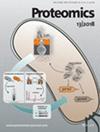Monitoring Changes in the Levels of Newly Synthesized Proteins in Response to Nutlin-3 Treatment
Abstract
Developing methodological approaches for discovering novel pathways is a key challenge in the life science research. Biological pathways are regulated—in higher eukaryotes—by a vast diversity of linear peptide motifs that mediate combinatorial specificity in signal transduction pathways. The E3 ubiquitin ligase component (MDM2) is such a protein that interacts with target proteins containing linear motifs such as p53. Drug leads, such as Nutlin-3, that bind to the MDM2 hydrophobic pocket mimic p53 and can release p53 from MDM2 control and this can lead to cell death. However, these drug leads act allosterically, having agonist effects on MDM2's functions and there are other proteins whose steady state levels can be altered by Nutlin-3. As cell density can alter the proliferation state of cell populations, we examined the impact of Nutlin-3 on levels of newly synthesized proteins using pulse-SILAC mass spectrometry. The data demonstrate that at differing cell densities or population-wide proliferation rates, different newly synthesized proteins dominate the proteome landscape in a Nutlin-3 dependent manner. These data further confirm that the cell state in a population of cells can in turn impact on the MDM2 signalling landscape. This methodology forms a blueprint for biomarker discovery using clinical samples that can detect changes in the synthesis rate of proteins in cell populations treated with specific agents. Broader implications highlight tools that can be used to study allosteric regulation of protein-drug combinations.

 求助内容:
求助内容: 应助结果提醒方式:
应助结果提醒方式:


